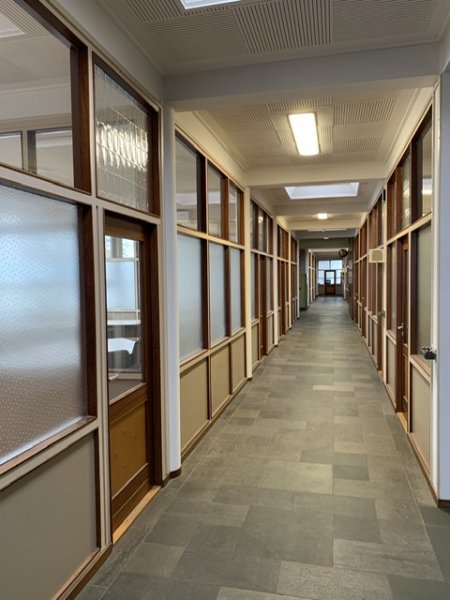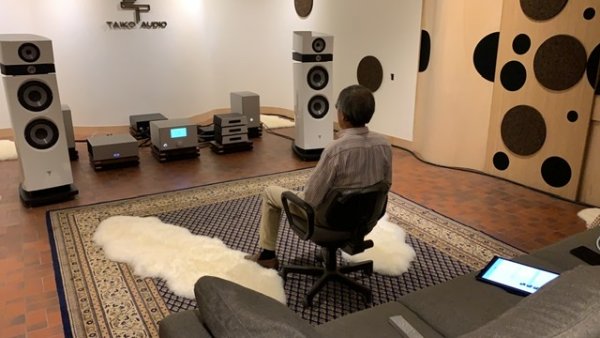Wil, if you would like to let it go I would be interested in buying your ER from you so I can test it too as it looks like mine won't arrive for quite some time.
Wil is shipping it to me in 2 weeks.
Wil, if you would like to let it go I would be interested in buying your ER from you so I can test it too as it looks like mine won't arrive for quite some time.
I'm putting together the budget for what I'm hoping will be a v creditable streaming solution, not at the entry tag of Extreme or Innuos Statement, but excellent nonetheless. I've decided to go fibre optic from the start, and comments like this and Wil suggest to me that it's the right choice to go optical, and that the $750 to $1k budget needed for specialist EtherRegen switch plus LPS will be surplus to requirements. I can use that budget to send more on the streamer/renderer or dac.As far as I can figure out, switches and specifically the EtherRegen are devices to solve a specific problem. If your system has significant amounts of ethernet cable, poor quality oscillators and/or poor quality power supplies as you would find in typical consumer networking products, then you can be almost certain that you have EMI and jitter that will benefit greatly from cleaning up and reclocking, so a good quality switch will, in all likelihood give you significant improvements.
If on the other hand you have done a great job in isolating your system from EMI by things like high quality fibre optic and use high quality oscillators and power supplies, the need for a switch is greatly diminished.
Given the prevalence of low cost commercial networking products, I would expect the vast majority of audiophiles will achieve very positive results from an EtherRegen or SoTM switch, but for a few the benefits may be absent simply because there’s no problem for them to solve. Given that the levels of EMI and jitter are going to vary greatly between different systems, you would also expect the degree of SQ improvement from implementing a switch to vary considerably.
Last year I obtained a USB reclocking device on 30 day trial. At the end of that period I returned it as it consistently gave inferior results vs a high quality USB cable. I took that to mean that my server’s USB output did not have the EMI and jitter that the reclocking device required be present in order for it to create improved sound quality.
Hello Emile,
Your production facility looks very neat and tidy, quite spacious too.
I got the same feeling when looking inside your Extreme server!
Haha
https://www.monoandstereo.com/2019/11/taiko-audio-sgm-extreme-production.html

Wow, it's big!Thank you CK! The building we’re in has its charm, it’s 60 years old and virtually in original state. The space in the photos on that link is the ground floor work area. This is the upstairs office area:
View attachment 59427
Another WoW!Alltogether 6200 m2 !
Another WoW!
Since the facility is so big, you must fully utilize it : hire more staff and launch more products!

I also totally agree with Emile's post of #1702 :
I have the same experience that open reel tapes give the best dynamics and density among all software formats.
Emile, what's your opinion on Mike's sweet spot? I still remain intrigued that sitting closer than 10' to spkrs, four at 7' tall, makes sense.
I’d guess it to be more like 12ft, it is somewhat imposing visually, but it works. The soundstage and images are completely detached from the loudspeakers. There was a saxophonist or trumpetist (it was 6 weeks ago) standing right next to me on the left seemingly just 4-5ft away with full physical presence, it was a startling experience. But the stage also extends beyond the room behind and to the left and right of the speakers. The stage is just immense with lifelike sized musicians playing their instruments. A real virtual reality experience. What I wrote in my report may seem exaggerated, but it is really very different from what you are used to hearing from a system.
Emile, you're not the first one to have said that. Fantastic.
My mistake, I thought Mike sat as close as 9'. I even thought I read 7' once. My comment then was "might as well listen on headphones".
My guess is you learn a lot about the capabilities of your Extreme hearing it in such different circumstances, and close to optimal at Mike's.
Does hearing SOTA analog, esp tape, give you ideas on where digital could go further?
Or is it even more apples v oranges than before?
Funnily enough my 10 year old daughter likes to sit right in between my speakers. I tried it and it feels almost ethereal. Of course there isn't the focused voice and soundstage but for a quick hedonistic trip it's like wearing a pair of 6ft high headphones. Everyone should try it at least once.

Agree with you 200% !In a way I guess it is similar to listen to headphones, but with full scale presence, which makes the comparison invalid again.
It is indeed very educational to hear it in such a variety of systems, provides me with loads of datapoints, it is also very recognizable across all those systems which is interesting all by itself. It seems to perform very consistently.
My takeaway is that if the source material has been either digitally recorded or digitally mastered it just performs better on a high grade digital system. But the opposite is true for a native analogue recording. So in a way I guess it is apples versus oranges. If we take the Arnold overtures for example, there is a RR-48 version (analogue) and a RR-1748 (digital), both are available on vinyl, the RR-1748 is also available as a 24/176 digital download. The RR-1748 performs better on digital then on vinyl, the RR-48 on vinyl wins though. So if you have the right version, vinyl is better.
Now we’ve performed quite some investigation since then, initially focussing on dynamic range. Digital is being touted to have a much better dynamic range then analogue (96-144dB versus 50-70dB), but these numbers are meaningless if its not present in the music. Ignoring the loudness war compression mess, you will be hard pressed to find a recording with more then 25dB of actual dynamic range (R128 standard), the earlier mentioned Arnold overtures are close to that for example. We did manage to find a handful of digital recordings topping out at 28dB, and those are really good. So it does not seem to be about that. However Mike’s tape is really insanely dynamic sounding, the only thing I ever heard getting close to that or maybe even being on par was when we visited Matej Isak in Slovenia. I attributed it to the speakers he was using back then.
But I recently acquired a pair of Totaldac D1-drivers, and now I have those crazy dynamics as well. I started a thread on them here:
https://www.whatsbestforum.com/threads/totaldac-d1-driver-the-pre-amplifier-driver.29500/
So having correct gain / interface matching seems to be a part of this, and it seems a lot of DAC / Preamplifier interfaces fall short in this area. It is good to note that with Vinyl systems this particular area is something people spend a lot of effort on to get right. With digital systems its just plug&play and accept whatever the outcome.
This still leaves digital mastering as a factor impacting sound quality. Digital is expected to sound clean, so mastering engineers clean it up, remove noise, and perhaps take out some vital upper range harmonics belonging to instrument textures.
I have purchased and downloaded several unedited direct tape to digital transfers from http://highdeftapetransfers.com/ . Those are noisy (which would normally be filtered out), but do have interesting midrange textures, sounding much more like vinyl or tape.
Now I have also acquired some digital recordings with a 25-28dB dynamic range, with minimal or no editing, and those sound very close to the real thing. Unfortunately this is not the norm and this quality is rare.
Where does this all leave us? I guess in the end it all comes down to your source material. For tape get unedited masters and you’re on top of the game. For vinyl get those native analogue direct transfers and you’re there as well. For digital you have to find those non butchered digital recordings . So it becomes a source material search game, where Vinyl has an edge with more available knowledge of actually good sounding recordings, and digital is still a bit in its infant stages as the industry is just slowly becoming aware of there being a considerable market for high quality digital recordings / masters.
This is all IMHO right now and I reserve the right to change my opinion with new datapoint acquisitions arriving on an almost daily basis
Agree, first thing we did when we returned, 12ft “nearfield”The speakers don’t integrate well enough on that distance but interesting nonetheless.
View attachment 59435
I’d guess it to be more like 12ft, it is somewhat imposing visually, but it works. The soundstage and images are completely detached from the loudspeakers. There was a saxophonist or trumpetist (it was 6 weeks ago) standing right next to me on the left seemingly just 4-5ft away with full physical presence, it was a startling experience. But the stage also extends beyond the room behind and to the left and right of the speakers. The stage is just immense with lifelike sized musicians playing their instruments. A real virtual reality experience. What I wrote in my report may seem exaggerated, but it is really very different from what you are used to hearing from a system.
| Steve Williams Site Founder | Site Owner | Administrator | Ron Resnick Site Owner | Administrator | Julian (The Fixer) Website Build | Marketing Managersing |


